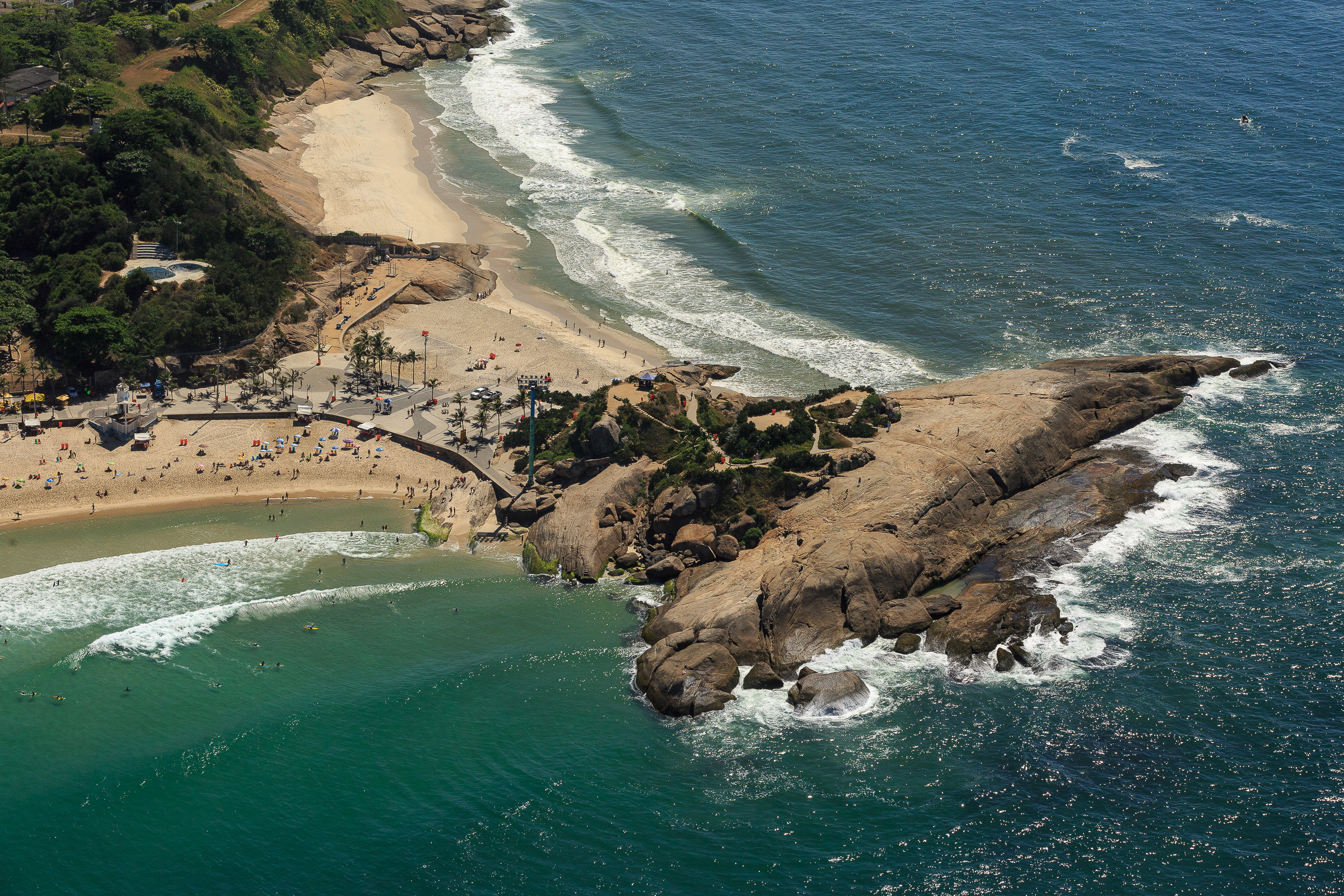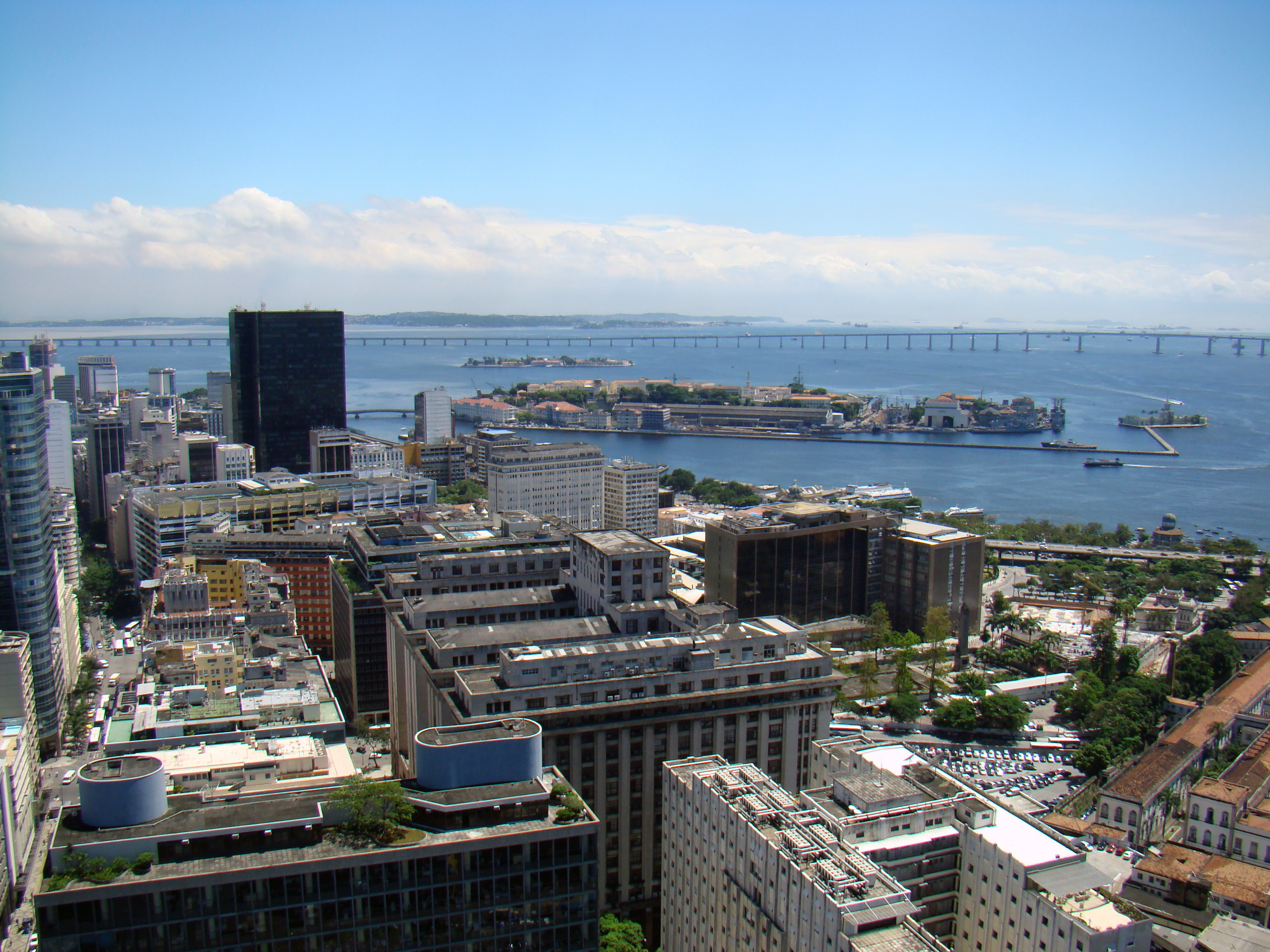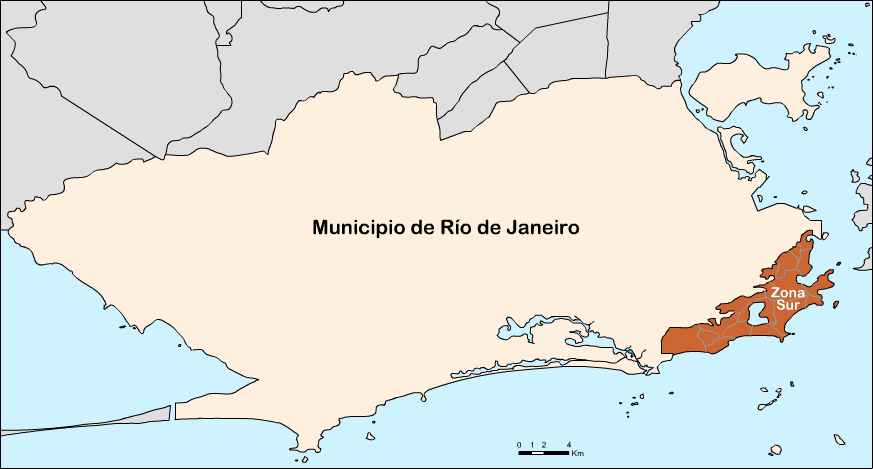|
Ipanema
Ipanema () is a neighbourhood located in the South Zone (Rio de Janeiro), South Zone of the city of Rio de Janeiro, Brazil, between Leblon, Rio de Janeiro, Leblon and Arpoador. The beach at Ipanema became known internationally with the popularity of the bossa nova song, "The Girl from Ipanema" ("''Garota de Ipanema''"), written by Antônio Carlos Jobim and Vinícius de Moraes. It borders the neighborhoods of Copacabana, Rio de Janeiro, Copacabana, Leblon and Lagoa, Rio de Janeiro, Lagoa. Etymology The name ''Ipanema'' originally referred to a river in the state of São Paulo, its etymology deriving from the Tupi language words ''ipá'' (pond) and ''nem-a'' (stinking). Possible translations for its original meaning are "worthless water", "stinking lake", "turbid water", or "water worthless for human consumption". The historian Teodoro Fernandes Sampaio, Teodoro Sampaio translated ''Ipanema'' as "bad water". The neighbourhood in Rio de Janeiro was named after José Antônio Mor ... [...More Info...] [...Related Items...] OR: [Wikipedia] [Google] [Baidu] |
The Girl From Ipanema
"Garota de Ipanema" (), or "The Girl from Ipanema", is a Brazilian bossa nova and jazz song. It was a worldwide hit in the mid-1960s and won a Grammy for Record of the Year in 1965. It was written in 1962, with music by Antônio Carlos Jobim and Portuguese lyrics by Vinícius de Moraes, with English lyrics written later by Norman Gimbel. The first commercial recording was in 1962 by Pery Ribeiro. The Stan Getz recording featuring the vocal debut of Astrud Gilberto became an international hit. This version had been shortened from the version on the album '' Getz/Gilberto'' (recorded in March 1963, released in March 1964), which had also included the Portuguese lyrics sung by Astrud's then-husband João Gilberto. In the US, the single peaked at number five on the ''Billboard'' Hot 100, and went to number one for two weeks on the Easy Listening chart. Overseas it peaked at number 29 on the UK Singles Chart, and charted highly throughout the world. Numerous recordings have ... [...More Info...] [...Related Items...] OR: [Wikipedia] [Google] [Baidu] |
Banda De Ipanema
Banda de Ipanema is one of the largest Carnival blocks of Rio de Janeiro's street Carnival festivities. The first parade happened in 1965, when Brazil was under a military dictatorship. In 2004 it was declared part of the city's cultural heritage. The first parade happens on Saturday two weeks before Carnival, and they march again on Carnival Saturday and Carnival Tuesday ( Mardi-Gras). The event attracts as many as 20 thousand people to the streets of Ipanema. History of Banda de Ipanema The format of the band was inspired by the Philarmonica Embocadura, a Carnival street band in the city of Uba, in the neighboring state of Minas Gerais. Designer Ferdy Carneiro rented a bus in 1959 to take some of his carioca friends to spend Carnival in his hometown. The event was headed by the ''presidents'' of the band, dressed in white suits and hats while pretending to play musical instruments. The actual band was in the back, and the whole town followed along. The idea lingered on, and ... [...More Info...] [...Related Items...] OR: [Wikipedia] [Google] [Baidu] |
José Antônio Moreira Filho, 2nd Baron Of Ipanema
José Antônio Moreira Filho, the second baron with grandee of Ipanema (27 August 1830 — 27 February 1899), was a Brazilian nobleman and businessman in real estate. He was the son of José Antônio Moreira, the first count of Ipanema, and of Laurinda Rosa Ferreira dos Santos. He married Luísa Rudge. They left many descendants. He was made Commander of the Portuguese Military Order of Christ and of the Order of Our Lady of the Conception of Vila Vicosa. He received his baronage by decree on 13 May 1885, and the grandeeship by decree on 5 September 1888. His title referenced the , on whose banks his father had helped build the Ipanema Ironworks, in Sorocaba. Subsequently, Moreira settled down in the city of Rio de Janeiro, where he was a leader in the urbanization of the neighbourhood of Ipanema Ipanema () is a neighbourhood located in the South Zone (Rio de Janeiro), South Zone of the city of Rio de Janeiro, Brazil, between Leblon, Rio de Janeiro, Leblon and Arpoador. The ... [...More Info...] [...Related Items...] OR: [Wikipedia] [Google] [Baidu] |
Antônio Carlos Jobim
Antônio Carlos Brasileiro de Almeida Jobim (25 January 1927 – 8 December 1994), also known as Tom Jobim (), was a Brazilian composer, pianist, guitarist, songwriter, arranger, and singer. Considered as one of the great exponents of Brazilian music, Jobim merged samba with cool jazz in the 1960s to create bossa nova, with worldwide success. As a result, he is regarded as one of the fathers of bossa nova, and as one of the most-celebrated songwriters of the 20th century. Jobim was a primary force behind the creation of the bossa nova style, and his songs have been performed by many singers and instrumentalists internationally since the early 1960s. In 1965, the album ''Getz/Gilberto'' was the first jazz record to win the Grammy Award for Grammy Award for Album of the Year, Album of the Year. It also won Grammy Award for Best Jazz Instrumental Album, Individual or Group, Best Jazz Instrumental Album – Individual or Group and Grammy Award for Best Engineered Album, Non-Classic ... [...More Info...] [...Related Items...] OR: [Wikipedia] [Google] [Baidu] |
Rio De Janeiro
Rio de Janeiro, or simply Rio, is the capital of the Rio de Janeiro (state), state of Rio de Janeiro. It is the List of cities in Brazil by population, second-most-populous city in Brazil (after São Paulo) and the Largest cities in the Americas, sixth-most-populous city in the Americas. Founded in 1565 by the Portuguese people, Portuguese, the city was initially the seat of the Captaincy of Rio de Janeiro, a domain of the Portuguese Empire. In 1763, it became the capital of the State of Brazil, a List of states of the Portuguese Empire, state of the Portuguese Empire. In 1808, when the Transfer of the Portuguese Court to Brazil, Portuguese Royal Court moved to Brazil, Rio de Janeiro became the seat of the court of Queen Maria I of Portugal. She subsequently, under the leadership of her son the prince regent John VI of Portugal, raised Brazil to the dignity of a kingdom, within the United Kingdom of Portugal, Brazil and the Algarves, United Kingdom of Portugal, Brazil, and Algar ... [...More Info...] [...Related Items...] OR: [Wikipedia] [Google] [Baidu] |
Vinícius De Moraes
Marcus Vinícius da Cruz e Mello Moraes (19 October 1913 – 9 July 1980), better known as Vinícius de Moraes () and nicknamed "O Poetinha" ("The Little Poet"), was a Brazilian poet, diplomat, lyricist, essayist, musician, singer, and playwright. With his frequent and diverse musical partners, including Antônio Carlos Jobim, his lyrics and compositions were instrumental in the birth and introduction to the world of bossa nova music. He recorded numerous albums, many in collaboration with noted artists, and also served as a successful Brazilian career diplomat. Early life Moraes was born in Gávea, a neighbourhood of Rio de Janeiro, to Clodoaldo da Silva Pereira Moraes, a public servant, and Lidia Cruz, a housewife and amateur pianist. In 1916, his family moved to Botafogo, where he attended Afrânio Peixoto Primary School. Fleeing the Copacabana Fort revolt, his parents moved to Governador Island while Moraes remained at his grandfather's home in Botafogo to finish sch ... [...More Info...] [...Related Items...] OR: [Wikipedia] [Google] [Baidu] |
Leblon, Rio De Janeiro
Leblon () is a neighborhood of Rio de Janeiro, Brazil. It is also the name of the local beach. The neighborhood is located in the South Zone of the city, between Lagoa Rodrigo de Freitas, Morro Dois Irmãos and the Jardim de Alah channel, bordering the Gávea, Ipanema, Lagoa, and Vidigal neighborhoods. It is regarded as a very affluent area. Leblon began as a quilombo of escaped slaves created by a Portuguese abolitionist landowner. Etymology The neighborhood is named for Carlos Leblon, a whaling empresario of French origin who possessed a chácara in the region since 1845. Before the area was urbanized it was known as ''Campo do Leblon'' (Leblon's Field). Early history The Quilombo of Leblon was a quilombo (settlement of escaped African slaves) that existed at the end of the 19th century in the present-day region of Clube Campestre da Guanabara and surroundings from what is now Rua Timothy Da Costa to Morro Dois Irmãos (in English "Two Brothers Hill") in Rio de Janei ... [...More Info...] [...Related Items...] OR: [Wikipedia] [Google] [Baidu] |
Arpoador
Arpoador (literally, ''the harpoon thrower'') is a region located on the southern zone of the city Rio de Janeiro, in a small peninsula between Ipanema and Copacabana. Part of its territory belongs to the neighbourhood of Ipanema, and part to Copacabana. Surfing Arpoador is considered one of the best metropolitan surf spots in Rio de Janeiro. The rock outcropping creates stable left breakers up to 7–10 feet high. Given its metropolitan location, crowds are ferocious and competitive. Given the fact that waves start to break against the rock on a good day, and that a strong rip tide along the promontory creates a quick re-entry, the take-off point is very small. Sunset During some time around midsummer Midsummer is a celebration of the season of summer, taking place on or near the date of the summer solstice in the Northern Hemisphere; the longest Daytime, day of the year. The name "midsummer" mainly refers to summer solstice festivals of Eu ... it is possible to see t ... [...More Info...] [...Related Items...] OR: [Wikipedia] [Google] [Baidu] |
Leblon
Leblon () is a neighborhood of Rio de Janeiro, Brazil. It is also the name of the local beach. The neighborhood is located in the South Zone of the city, between Lagoa Rodrigo de Freitas, Morro Dois Irmãos and the Jardim de Alah channel, bordering the Gávea, Ipanema, Lagoa, and Vidigal neighborhoods. It is regarded as a very affluent area. Leblon began as a quilombo of escaped slaves created by a Portuguese abolitionist landowner. Etymology The neighborhood is named for Carlos Leblon, a whaling empresario of French origin who possessed a chácara in the region since 1845. Before the area was urbanized it was known as ''Campo do Leblon'' (Leblon's Field). Early history The Quilombo of Leblon was a quilombo (settlement of escaped African slaves) that existed at the end of the 19th century in the present-day region of Clube Campestre da Guanabara and surroundings from what is now Rua Timothy Da Costa to Morro Dois Irmãos (in English "Two Brothers Hill") in Rio de Janei ... [...More Info...] [...Related Items...] OR: [Wikipedia] [Google] [Baidu] |
Rio De Janeiro (state)
Rio de Janeiro () is one of the States of Brazil, 27 federative units of Brazil. It has the second largest economy of Brazil, with the largest being that of the state of São Paulo (state), São Paulo. The state, which has 8.2% of the Brazilian population, is responsible for 9.2% of the Brazilian Gross domestic product, GDP. The state of Rio de Janeiro is located within the Brazilian geopolitical region classified as the Southeast Region, Brazil, Southeast (assigned by Brazilian Institute of Geography and Statistics, IBGE). Rio de Janeiro shares borders with all the other states in the same Southeast macroregion: Minas Gerais (North, N and Ordinal directions, NW), Espírito Santo (Ordinal direction, NE) and São Paulo (state), São Paulo (Ordinal directions, SW). It is bounded on the east and south by the South Atlantic Ocean. Rio de Janeiro has an area of . Its capital is the city of Rio de Janeiro, Rio de Janeiro, Rio de Janeiro, which was the capital of the Portuguese Colonial ... [...More Info...] [...Related Items...] OR: [Wikipedia] [Google] [Baidu] |
South Zone (Rio De Janeiro)
The South Zone (; ) is an area of the city of Rio de Janeiro situated between the Tijuca Massif, the Atlantic Ocean and Guanabara Bay. Most of it is made up of neighborhoods along the Atlantic coastline, such as São Conrado, Vidigal, Leblon, Ipanema, Copacabana, and Leme. It also includes the neighborhoods of Urca, Botafogo, Flamengo and Glória, on Guanabara Bay, and Santa Teresa, Catete, Laranjeiras, Cosme Velho, Humaitá, Lagoa, Jardim Botânico and Gávea, bordering on Tijuca Forest to the West or North. Zona Sul includes a number of favelas, such as Rocinha, close to São Conrado, Vidigal, close to Leblon, Cantagalo and Ladeira dos Tabajaras, in Copacabana, and Morro Dona Marta, in Botafogo. It is in this region that the majority of the city's ''balneario'' beaches and hotels are located, as are the Rodrigo de Freitas Lagoon, much of the Tijuca National Park, the Sugarloaf Mountain, with its cable car, the Corcovado hill, where the statue of '' Christ the ... [...More Info...] [...Related Items...] OR: [Wikipedia] [Google] [Baidu] |
Marine Outfall
A marine outfall (or ocean outfall) is a pipeline or tunnel that discharges municipal or industrial wastewater, stormwater, combined sewer overflows (CSOs), cooling water, or brine effluents from water desalination plants to the sea. Usually they discharge under the sea's surface (submarine outfall). In the case of municipal wastewater, effluent is often being discharged after having undergone no or only primary treatment, with the intention of using the assimilative capacity of the sea for further treatment. Submarine outfalls are common throughout the world and probably number in the thousands. The light intensity and salinity in natural sea water disinfects the wastewater to ocean outfall system significantly. More than 200 outfalls alone have been listed in a single international database maintained by the Institute for Hydromechanics at Karlsruhe University for the International Association of Hydraulic Engineering and Research (IAHR) / International Water Association ... [...More Info...] [...Related Items...] OR: [Wikipedia] [Google] [Baidu] |








